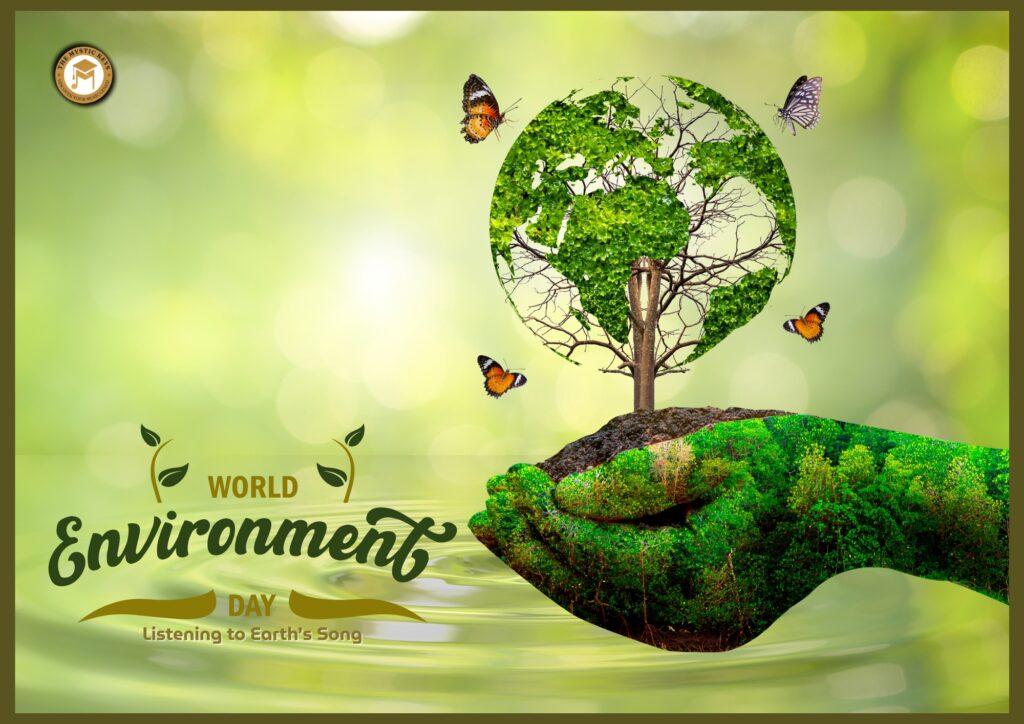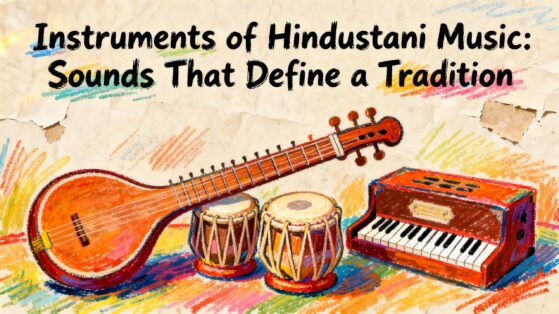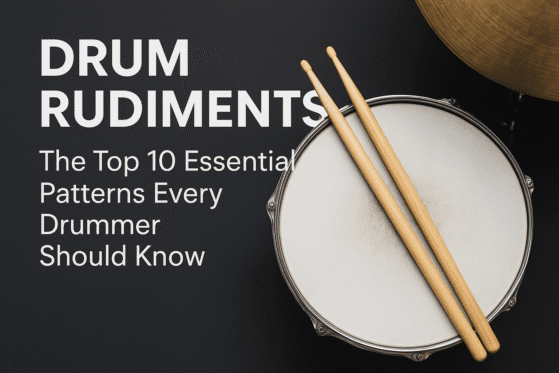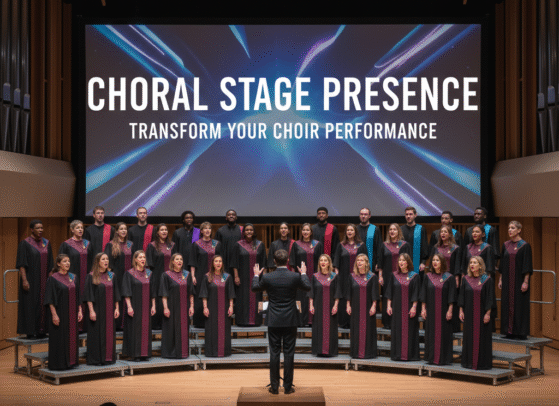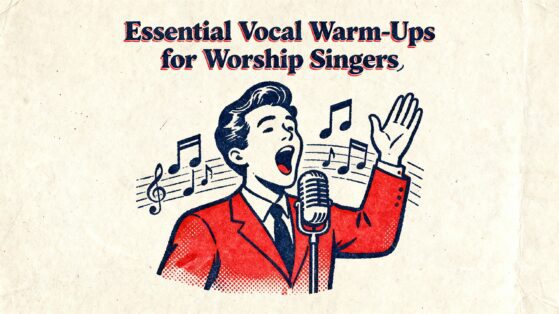World Environment Day | Listening to Earth’s Song
Every year, on the 5th of June, millions across the globe pause to observe World Environment Day—a dedicated moment to reflect on our relationship with the planet we call home. This day is not only a celebration of Earth’s breathtaking beauty but also a clarion call to action, urging us to restore, protect, and preserve the natural world before it’s too late.
As we stand at the crossroads of environmental crises—climate change, desertification, loss of biodiversity—it is vital to ask: How can we, as individuals and communities, contribute to healing this fragile world? Surprisingly, one of the most profound connections to nature comes through music, an art form that mirrors the rhythms of Earth itself.
Let us embark on a journey exploring how World Environment Day and music intertwine—how sounds, melodies, and rhythms connect us deeply to the environment, and how this union inspires a more sustainable future.

The 2025 Theme | Land Restoration and Its Importance
This year, the UNEP spotlights “Land Restoration, Desertification, and Drought Resilience” as the theme for World Environment Day 2025. Healthy land is the foundation of life, supporting forests, crops, and countless species.
But across the world, land is degrading, threatening food, water, and biodiversity. Desertification spreads silently, turning green spaces into wastelands.
In this context, restoration becomes a symbol of hope—a shared mission that calls for action from all sectors, including creatives and musicians, to inspire awareness and change. Through our collective efforts, we can revive the Earth’s vitality and secure a sustainable future. Music, as a universal language, has the power to connect people to this urgent cause, spreading the message far and wide. Every note played in harmony with nature reminds us of what’s at stake and what we stand to protect. Together, we can turn the tide and restore balance to our planet.
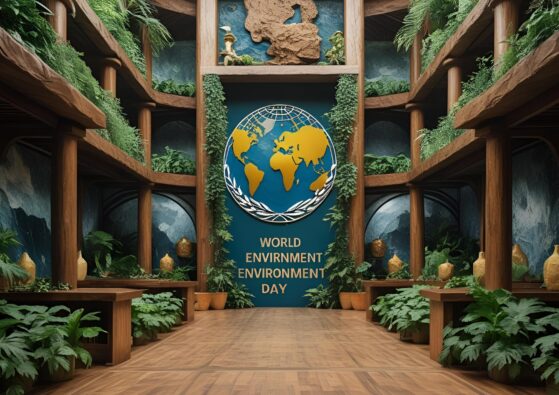
Nature’s Music | The Original Composer
Long before humans invented instruments, the Earth was alive with its own symphony. The natural world creates music effortlessly—whether through the gentle rustle of leaves, the rhythmic crashing of ocean waves, or the melodious calls of birds greeting dawn.
In fact, many musical traditions draw inspiration directly from nature:
Birdsong has influenced countless melodies and improvisations in classical, folk, and contemporary music.
The cycles of seasons and weather have inspired Indian classical ragas like Raga Megh (the rain raga) and Raga Basant (spring).
Indigenous peoples have historically used music to communicate with natural forces, celebrating the Earth’s cycles and invoking its blessings.
The link between nature and music is not merely aesthetic—it is foundational. Our sense of rhythm, harmony, and sound is shaped by our environment, embedding a natural connection in every note we play or sing.

The Environmental Footprint of Music | Awareness and Responsibility
While music is a universal language that connects us all, the modern music industry unfortunately carries hidden environmental costs. For instance, large concerts and festivals consume vast amounts of energy, and the production of instruments often relies on unsustainable materials. Moreover, even digital streaming depends on power-hungry data centers, frequently powered by fossil fuels. By recognizing these impacts, we take the first crucial step toward cultivating a greener, more responsible music culture.
To break it down:
Music festivals and concerts draw thousands but generate significant waste—from single-use plastics to carbon emissions linked to travel and power consumption.
Similarly, the manufacture of many musical instruments involves harvesting rare woods or animal materials, contributing to deforestation and habitat loss when not sourced responsibly.
Additionally, although digital streaming reduces physical waste, it depends heavily on data centers that consume considerable electricity, often derived from non-renewable sources.
Understanding these realities is not only important—it is essential, especially as we observe World Environment Day and reflect on our role in protecting the planet. As musicians, educators, and passionate music lovers, we must acknowledge that our creative pursuits do not happen in isolation. Consequently, alongside our love for music, we bear a vital responsibility: to consciously balance our passion with a commitment to sustainability. It is only by embracing this dual awareness that we can ensure our art uplifts both the human spirit and the health of our planet.
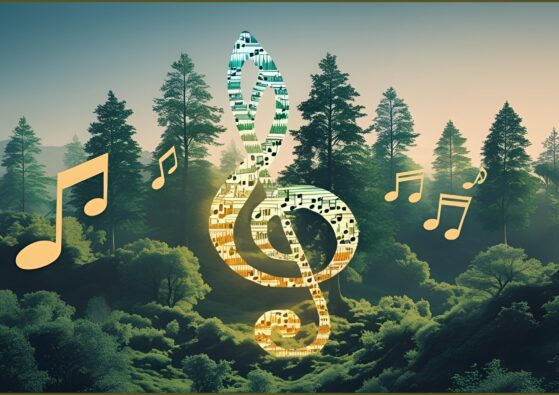
Harmonizing Music with Sustainability | How Musicians Can Help
Fortunately, as awareness grows, the music community is increasingly embracing eco-friendly practices. Moreover, this World Environment Day presents an ideal moment to reflect on our habits and thoughtfully consider adopting meaningful changes that help reduce our environmental impact. For instance, some of the ways musicians and organizers can contribute include:
Supporting instrument makers who use sustainably sourced materials or innovative alternatives.
Choosing energy-efficient amplification and lighting for live performances.
Promoting digital concerts and workshops to reduce travel emissions.
Organizing or participating in eco-conscious music festivals that prioritize waste reduction, recycling, and carbon offsetting.
Raising awareness through lyrics and compositions that speak about nature, climate change, and conservation.
At The Mystic Keys, we wholeheartedly encourage our students not only to master their instruments with skill and passion but also to grow into environmentally conscious musicians, understanding deeply the powerful role they can play in inspiring and driving positive change within their communities and beyond.

Music as a Catalyst for Environmental Awareness and Action
Music has the power to move hearts and change minds. Over time, songs have raised awareness, sparked movements, and united communities. Environmental issues are no exception—music continues to inspire action and bring people together for the planet. Through melody and rhythm, complex messages become relatable and memorable. This makes music a vital tool in spreading hope and driving change.
Think of iconic pieces like:
Michael Jackson’s “Earth Song”, which mourns environmental destruction and advocates healing.
Joni Mitchell’s “Big Yellow Taxi”, highlighting the loss of natural spaces.
Indigenous chants and lullabies that pass on deep respect for nature.
By incorporating environmental themes into music education and performance, we can nurture a generation that values the Earth as deeply as their art.
Teachers and students might:
Compose original songs inspired by local ecosystems.
Experiment with field recordings of nature sounds in their compositions.
Host concerts dedicated to environmental causes, partnering with local conservation groups.
Use music to educate younger learners about biodiversity and climate change.
These initiatives bring the message home—music becomes not only an expression but a tool for advocacy.
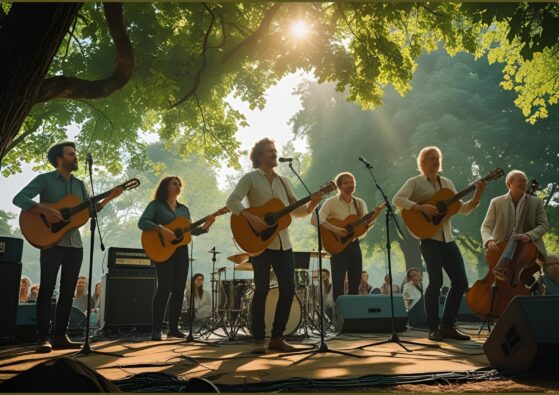
The Mystic Keys Philosophy | Fostering Conscious Creativity
At The Mystic Keys, we view music as a powerful language that not only shapes sound but also influences the world around us. Beyond mastering technique, we encourage our students to listen deeply, think thoughtfully, and create with clear purpose. Because true musicianship involves awareness—not just of notes, but of their wider impact—we strive to foster mindfulness that nurtures artists who connect their music with meaning and responsibility. Ultimately, we aim to empower every student to raise their voice in harmony with the environment and society.
In practical terms, this approach includes encouraging students to practice outdoors, thereby linking their music with nature’s rhythms. Additionally, we offer lessons on eco-friendly instrument care and maintenance to promote sustainable habits. We also organize workshops exploring the environmental history of music and sound, helping students understand the roots of their craft in the natural world. Furthermore, we invite reflection on how musical choices can affect the planet, deepening their sense of stewardship.
Through these efforts, by weaving environmental consciousness into every aspect of music education, we empower our artists to become true agents of positive transformation.
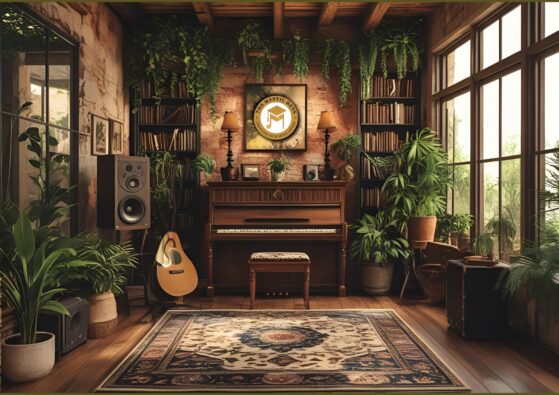
Small Steps That Make a Big Impact
Every musician and listener, no matter their background or skill, can help build a greener music culture. One person’s impact may seem small, but together, conscious and consistent choices create real change.
To start, switching to digital sheet music cuts paper waste and makes practice easier. Along with this, donating old or unused instruments to local schools or community centers gives them new life and reduces waste.
Moreover, attending or organizing local acoustic performances lowers electricity use and promotes sustainability. Likewise, choosing eco-friendly travel like cycling, carpooling, or public transport cuts carbon footprints.
Beyond personal actions, supporting or hosting carbon-neutral concerts sends a strong message. Finally, music schools and groups can plant trees or join local green projects. This shows that nurturing music and protecting the planet go hand in hand.
In addition, raising awareness through music can inspire others to act responsibly. Furthermore, incorporating environmental themes into songs connects listeners emotionally to nature. Also, collaborating with environmental organizations strengthens community efforts. Meanwhile, technology offers new ways to reduce the environmental impact of music production. Altogether, these steps help create a sustainable future for both music and the planet.
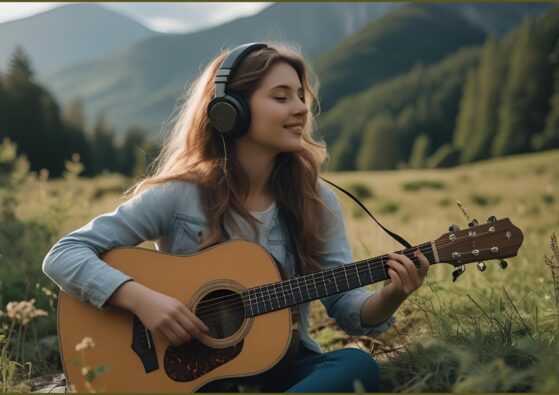
Conclusion | Let’s Make Earth’s Song Eternal
As we celebrate World Environment Day 2025, it’s more than just a date on the calendar—it’s a moment to pause, reflect, and reconnect. When we look closely, we realize that nature and music have always moved together in harmony.
The Earth, in many ways, is our first composer. The rustling of leaves, the rhythm of rainfall, the chorus of birds at dawn—these sounds shaped the earliest sense of melody and rhythm in human expression.
As we draw inspiration from nature, we’re also reminded that it gives us more than beauty—it gives us the very tools to create. The wood in our instruments, the air we breathe to sing, the silence that holds space for sound—all come from the environment we’re called to protect.
This connection calls for responsibility. When musicians create with awareness, music becomes more than art—it becomes advocacy. Each note can carry a message. Each performance can inspire change.
That’s why, at The Mystic Keys, we believe in aligning creativity with care. We invite you to be part of this movement—where music not only entertains, but also empowers, uplifts, and restores.
Let your music echo the voice of the Earth—subtle yet strong, timeless yet urgent. And together, let’s make every note a step toward a greener, more harmonious world.
Related Blogs
Music is more than just sound—it actively shapes your brain.
How to Play Music with More Emotion and Expression
Music has the extraordinary ability to stir deep emotions and create unforgettable experiences.


